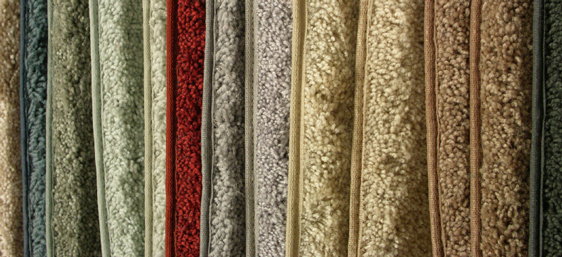How do you find the best carpet for your home?
While the cost of carpeting is very attractive, the other benefits that accompany this flooring option make it the logical choice for homeowners.
The sound buffering qualities of carpet are important in a home or commercial setting. From a design standpoint, no other flooring option can change the mood of a room so quickly with a splash of color or texture. And carpeting doesn’t have to be just wall-to-wall. Area rugs and stair runners can accomplish the same goals, while still capturing the elegance of hardwood flooring.
The only difficult decision in choosing carpet is what kind to choose! When customers come to our Milford New Hampshire store, we first want to know what rooms they will have carpeted. Then we can begin to steer them in a direction of choosing the best carpet for their needs. The top choices for most people are Berber Carpet, Plush Carpet and Wool Carpet.
But first, it’s helpful to understand a bit about carpet types, which refers to way they are made. There are four basic types of carpet: cut and pile; cut and loop; level loop; multilevel loop.
Cut pile
These are the Plush carpets that are the most popular choice for residential homes. Saxony, Velvet Plush and Frieze are examples of cut pile carpets. When selecting cut pile carpeting for your home, it’s important to know how much foot traffic the room will get. A plush carpet with a tighter nap will tend to last longer than a looser one.
Cut loop
Also known as “textured carpeting,” this type of carpet often has textured appearance, using a loop style in which some fibers are cut. Cut loop carpets hide traffic very well.
Level loop
Just as it sounds, a level loop carpet has an even pile of un-cut loops and is very durable in high traffic areas. Commonly known as Berber carpeting, it is an economical choice that also presents a feeling of quality. Many Berber carpets manufactured today use a thicker yarn and have improved the quality over the years.
Multi-level loop
This type of loop carpeting has a random textured appearance. The advantages of multilevel loop is in its ability to hide footprints in high traffic areas, and provide a textured design element to the room.
These carpet types are made up of fibers. Fibers are available in two categories – natural or synthetic. The type of fiber used can affect the durability, maintenance, and overall cost of your carpeting choice. These are some of the most popular fiber types:
- Wool carpeting is known for its soft luxurious feel and its ability to naturally repel dirt and resists staining. Wool carpeting is on the higher end of the price scale.
- Nylon has been the standard in synthetic fibers for many years, nylon has superior crush resistance and color choices. The downside was nylon is a low stain resistance and the high cost of manufacturing.
- Polyester (or “PET”) is often used in cut pile carpeting for soft feel, and resists some staining better but, as a plush carpet polyester doesn’t bounce back as well as nylon.
- Olefin is commonly used in Berber carpet, Olefin resists moisture and mildew and holds up fairly well under foot traffic. One downside to Olefin is in its tendency to absorb stains because the fiber is oil-based.
- Triexta (or “PTT”) is a revolutionary fiber created by DuPont contains partially recycled product from plastic soda bottles. Because of the low impact to the environment, superior stain resistance and soft, plush feel, Triexta fiber is surpassing all other fiber types commonly used in Plush carpeting.
Hopefully you’ve narrowed your search down by now, and are close to deciding on the best carpet for your home.
Here are a few final considerations:
- Twist. Carpet fibers are twisted and heated in the manufacturing process to hold their shape. Twist can affect how long your carpet will last. Tighter the twist, the better your carpet will hold up over time. Twists are measured in “TPI” or “twists per inch.
- Pile Height. Cut pile carpets with a shorter nap will resists crushing better than those with a thicker nap
- Density. How much yarn was used in the manufacturing process, and how closely packed the tufts are will create a longer-lasting carpet that is more crush resistant. A quick way to check carpet density is to simply bend the carpet. You will see less of the carpet backing with a denser carpet.

